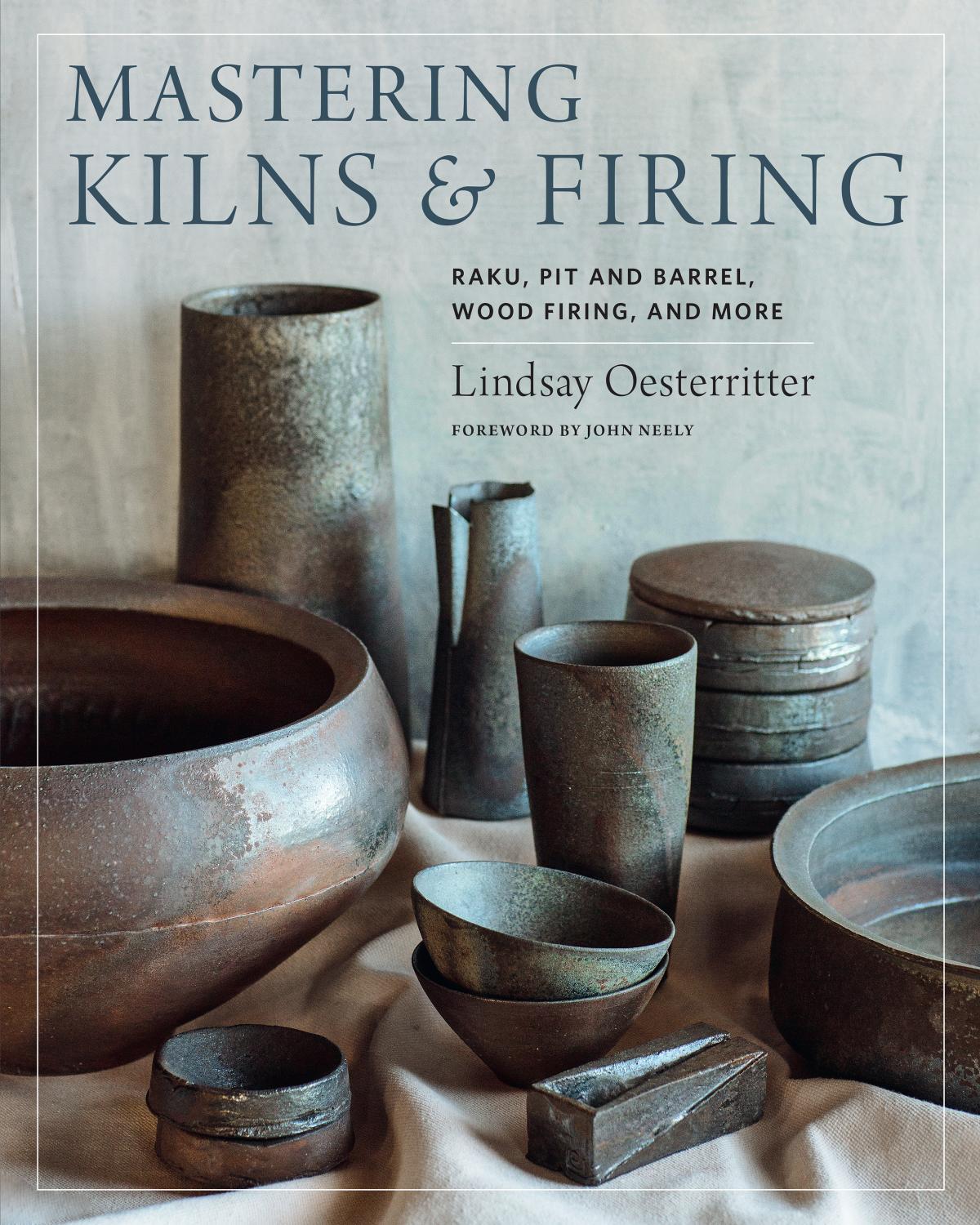Mastering Kilns and Firing by Lindsay Oesterritter

Author:Lindsay Oesterritter
Language: eng
Format: epub, pdf
Publisher: Quarry Books
Published: 2019-03-21T16:00:00+00:00
LOADING THE KILN
Wait, we haven’t even discussed the kiln and firing yet … why am I talking about loading a kiln? When pit firing, you have many options for combustibles and experimentation when firing. I think it’s important to run through some of this before we get to the firing.
Beyond sawdust and wood, there are many options for what you can burn in your pit. Like the cow patties used in the Martinez firings (shown here), pit fire traditions historically developed hand-in-hand with the combustible materials that were readily available. The results these combustibles yielded varied from village to village, and a particular village would be known for the results linked to the combustibles or fuel they used to fire the kiln. Today, the same is true: the results combustibles yield vary, as does their consistency from firing to firing. The results of many of the more experimental combustibles can feel random, and it takes a level of commitment to successfully use them.
When evaluating combustibles, first things first: if you want it to burn well, it must be dry. (If it is not dry, it will make a big blob on your pot.) Second, keep in mind that salt or sodium chloride helps promote fuming. Along with the copper carbonate and other combustibles, it is important to sprinkle salt in your sawdust to promote fuming. Table salt, rock salt, and sea salt will all work. You can either mix the salt into your copper carbonate and sprinkle them together or sprinkle both separately. In addition to sprinkling salt on the sawdust, it is also common to add seaweed, kelp, and driftwood into the kiln as combustibles or to soak a material in saltwater. (But dry it out before putting it in the kiln.)
When pit firing, the results on the pots from the smoke is dark grey to black. This means that where the pot is sitting in the sawdust or other combustible it will be dark grey to black. If you really like this black, consider a sawdust firing, saggaring with sawdust, and using darker sigs and clays with the smoke effect (maybe even rakuing). On the other hand, if something that will not burn is touching your pot, like a foil saggar or another pot, it will be a quiet spot that does not get much fuming or smoke. If you like less smoky action on your pieces, try packing them closely together, use more closed saggars, and don’t put a lid on at the end for the cooling, which could trap smoke.
Note There will be times that you work really hard to layer different surfaces around a pot to burn. Then, when you unload it, it does not look like anything has happened. Other times, you might hurriedly load a bare pot, and it comes out looking like a galaxy. This is one of the many reasons to love alternative firing.
Here is a starting list (in no particular order) of combustibles/colorants or other elements to try in your pit.
Download
Mastering Kilns and Firing by Lindsay Oesterritter.pdf
This site does not store any files on its server. We only index and link to content provided by other sites. Please contact the content providers to delete copyright contents if any and email us, we'll remove relevant links or contents immediately.
Audition by Ryu Murakami(4099)
The Body: A Guide for Occupants by Bill Bryson(3801)
Adulting by Kelly Williams Brown(3670)
Housekeeping by Marilynne Robinson(3401)
Zero Waste Home by Bea Johnson(3290)
Be in a Treehouse by Pete Nelson(3212)
Seriously... I'm Kidding by Ellen DeGeneres(3100)
Better Homes and Gardens New Cookbook by Better Homes & Gardens(2954)
Barkskins by Annie Proulx(2880)
The Healing Self by Deepak Chopra(2796)
Hedgerow by John Wright(2776)
The Life-Changing Magic Of Tidying Up- The Japanese Art Of Decluttering And Organizing (v5.0) by Marie Kondo(2745)
Spark Joy by Marie Kondo(2677)
The Genius of Japanese Carpentry by Azby Brown(2609)
The Cellar by Natasha Preston(2595)
Work Clean by Dan Charnas(2562)
120 Days of Sodom by Marquis de Sade(2437)
The Book of Numbers by Peter Bentley(2404)
A Monk's Guide to a Clean House and Mind by Shoukei Matsumoto(2404)
